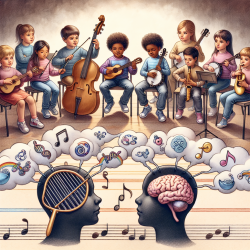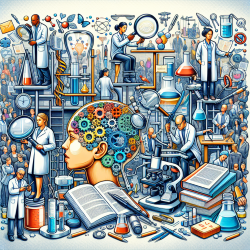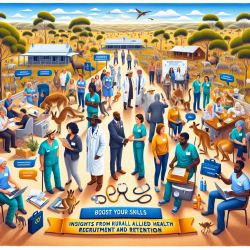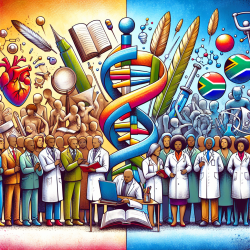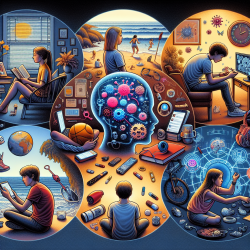Introduction
As practitioners in the field of speech-language pathology, we are constantly seeking innovative ways to enhance language development in children. Recent research has highlighted a fascinating connection between musical abilities and language skills, providing us with a new perspective on how to approach language development. The Musical Abilities, Pleiotropy, Language, and Environment (MAPLE) framework offers a comprehensive understanding of the genetic and environmental factors that link musicality and language skills. This blog will explore how practitioners can leverage these insights to improve outcomes for children.
The MAPLE Framework: A New Perspective
The MAPLE framework, as outlined in the research article "The Musical Abilities, Pleiotropy, Language, and Environment (MAPLE) Framework for Understanding Musicality-Language Links Across the Lifespan," posits that musical and language-related abilities share common genetic architecture. This genetic pleiotropy suggests that the same genetic factors may influence both musical and language skills, alongside overlapping neural endophenotypes. The framework also considers how enriched musical and linguistic environments can further support these abilities.
Key Findings from the Research
- Musicality is robustly associated with individual differences in speech-language skills, including speech perception-in-noise, prosodic perception, and phonological skills.
- Genetic studies reveal that both musical and language-related traits exhibit polygenicity, meaning they are influenced by multiple genes.
- Musical rhythm abilities are linked to grammatical skills, reading skills, and aspects of second/foreign language learning.
Implications for Practitioners
Understanding the connection between music and language can guide practitioners in developing more effective interventions. Here are some practical applications:
- Incorporate Music into Therapy: Use musical activities to enhance language skills, particularly in areas like phonological awareness and prosodic perception.
- Assess Musicality: Consider evaluating a child's musical abilities as part of a comprehensive language assessment to identify potential strengths and areas for intervention.
- Promote Enriched Environments: Encourage families to create musically and linguistically enriched home environments to support their child's development.
Encouraging Further Research
While the MAPLE framework provides a solid foundation, there is still much to learn about the intricate connections between music and language. Practitioners are encouraged to engage in further research to explore these links and develop evidence-based practices. Collaboration with geneticists and neuroscientists can lead to a deeper understanding of the biological mechanisms at play.
Conclusion
The MAPLE framework offers a promising avenue for enhancing language development through music. By integrating these insights into practice, we can create more effective interventions that leverage the natural connections between music and language. As we continue to explore this exciting frontier, we have the potential to unlock new possibilities for children's language development.
To read the original research paper, please follow this link: The Musical Abilities, Pleiotropy, Language, and Environment (MAPLE) Framework for Understanding Musicality-Language Links Across the Lifespan.
